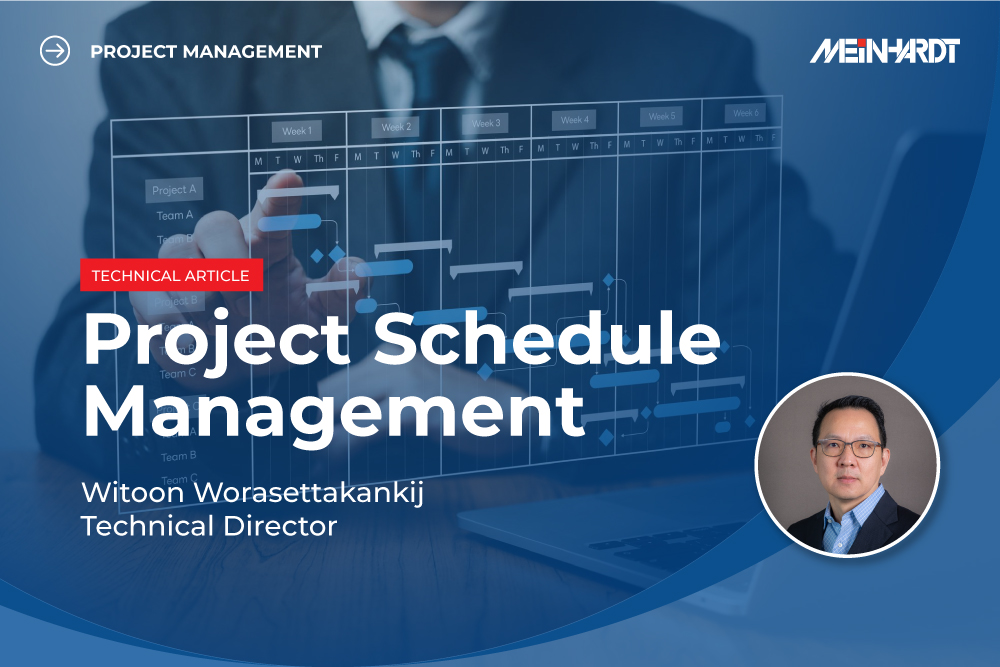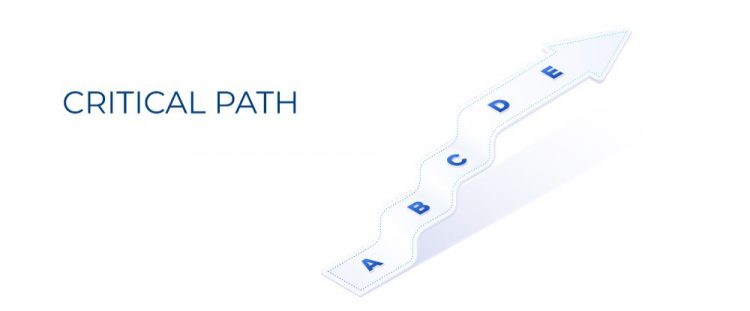Project Schedule Management
Timely completion of a project can give a business a competitive edge by bringing its product or service to the market before its competitors. This is why project schedules are so crucial to projects and are almost always one of key success factors on any project. Project schedules play a vital role in achieving this goal by ensuring timely project completion. This article will discuss the basics of project schedule management, the essential knowledge, and some techniques to keep the projects on track.

The Significance of Project Schedules
A well-defined project schedule acts as a roadmap, guiding the entire project lifecycle. It outlines the sequence of tasks, identifies dependencies between them, assigns resources, and establishes realistic timelines for deliverables. By following this roadmap, we can mitigate risks by identifying roadblocks and proactively addressing them through risk assessments. The schedule can also be used to improve communication and collaboration among stakeholders, ensuring everyone is aligned with project goals. Simply put, a good project schedule management strategy is a cornerstone of successful project execution.

Building a Project Schedule
Developing a project schedule involves a series of steps:
- Defining Project Scope: This initial stage involves clearly outlining project objectives and deliverables. What are we aiming to achieve? What tangible outputs are expected? A well-defined scope serves as the foundation for subsequent scheduling tasks.
- Work Breakdown Structure (WBS): The WBS is a hierarchical breakdown of the project scope into smaller, more manageable tasks. Think of it as a branching tree, where the main project objective forms the trunk, and the branches represent progressively more detailed subtasks required for completion. This structure allows for easier task assignment, resource allocation, and progress monitoring.
- Task Dependencies: Not all tasks can be completed in isolation. Some tasks rely on the successful completion of others before they can begin. Identifying these dependencies – mandatory or discretionary – is essential for establishing a realistic project timeline. Understanding the different types of dependencies (finish-to-start, start-to-start, finish-to-finish) and potential time lags or leads between tasks is crucial for proper scheduling.
- Estimating Task Durations: Assigning realistic durations to each task is critical. This requires experience, historical data analysis, and input from key stakeholders familiar with the project scope and complexities. Factoring in potential risks and delays ensures a more accurate and achievable schedule.
- Resource Allocation: Once task durations are defined, identify the resources required for each task’s completion. This might include personnel, equipment, materials, or even budget allocations. Resource availability and capacity must be considered to ensure realistic timelines and avoid bottlenecks.
- Schedule Visualization and Tracking: With the groundwork laid, project management tools can be employed to visualize the schedule. Gantt charts are a popular choice, offering a clear visual representation of tasks, durations, and dependencies. Regular schedule tracking is equally important. This involves comparing actual progress against the baseline schedule, identifying deviations, and taking corrective actions as needed.

Critical Path
Understanding project critical path is crucial in effectively managing the project schedule. The critical path within a project schedule refers to the sequence of activities that must be completed on time for the entire project to finish as planned. Any delays in activities on the critical path will directly impact the overall project timeline. Understanding the critical path allows us to prioritize these tasks and closely monitor their progress.
That said, the highest effort should be focused on activities on the critical path to control and improve project completion dates and to ensure the project will complete as per the schedule.
The near critical path is similar to the critical path but allows for a small amount of delay without affecting the overall project timeline. This path should also be closely monitored.

Milestones
Milestones serve as crucial checkpoints within the project schedule, marking the completion of significant stages or deliverables. These milestones help track progress, maintain team focus, and ensure alignment with project objectives. Examples of milestones can be design freeze, submission of deliverables, permit approvals, awarding contract, work commencement, utility tie-ins, handover of an area or a system, and project handover. A milestone can be used to signify a point of completion where one party completes specified works and hands over to another party to start or resume working. In addition, indicating target milestones in the tender documents communicates time targets which are important to the project to the bidders.

Acceleration
Once a schedule has been created for a project, it is important to regularly assess how the project is progressing compared to the schedule baseline. When any discrepancies or deviations are identified, investigate the reasons, and impacts as well as develop strategies and take corrective measures promptly. Several techniques can help expedite the project schedule, but each comes with its own set of considerations.
1. Fast Tracking
Fast tracking is a technique where tasks are performed in parallel to complete the project more quickly. The time saving is often achieved by overlapping the design and construction phases. This is possible by progressively freezing the design and element at a time and then constructing completed elements while the design of the rest continues. For example, the construction of piling begins onsite, while the design of above ground works continues.
Fast tracking is often done when there is a need to accelerate the project timeline for strategic reasons or a project is behind schedule. However, this approach comes with a risk of rework due to the overlapping activities, which may lead to increased project costs. Additionally, it requires careful coordination among team members to ensure that tasks are completed in the correct sequence and that resources are properly allocated.
2. Crashing
Another technique used to shorten a project timeline is crashing. Crashing involves adding more resources to a project to speed up completion time. This could involve adding more manpower, adding work shifts, working overtime, or investing in more equipment. While project crashing offers an initial appeal for shortening timelines, it can often lead to decreased team output and a rise in inaccuracies, especially for complex tasks. Like fast tracking, crashing also increases project costs and risks.
3. Changing Methodology
Changing the methodology of a project is another way to potentially save time. This can involve using a different construction method, changing the design and specifications, or even changing the procurement method. Examples would be changing materials to be precast concrete, prefabrication off site, locally available materials, and non-bespoke materials. Some procurement approaches if chosen properly may also save time such as design and build approach, remeasurement approach, and direct purchase of long lead items. While this can result in time savings, it also may lead to risks in project costs and quality.
4. Temporary Substitutes
For non-critical systems, using temporary substitutes for materials, equipment, or systems can be a time-saving option. This allows progress to continue while waiting for permanent solutions. However, ensure these substitutes do not compromise fire safety, health, or service quality. This approach can save time but may also lead to rework and cost increases when permanent solutions are implemented.
5. Reduce Project Scope or Quality
Reducing project scope and quality can bluntly reduce project duration but it could downgrade project standards, diminish usability and cause unsatisfaction. This strategy should be employed carefully to ensure that the final project still meets the stakeholders’ needs and expectations.
6. Phased Completion
Phased completion refers to an approach where stages of a project are completed in separate, sequential phases, instead of all at once. This allows the team to focus their efforts and resources on completing the most critical work.
However, phased completion can also add complexity to project management, as it requires careful coordination and communication to ensure that all phases are aligned and that progress in one phase does not negatively affect another.
While each of these techniques can help to reduce a project’s timeline, they all come with possible downsides. Effective project management involves carefully considering the benefits and drawbacks of each approach and considering the specific context and requirements of the project. While these techniques can save time, they also increase risks and costs respectively.
Conclusion
Effective project schedule management is critical to the success of any construction project. Nevertheless, it can be complicated tasks due to the need for input and actions from several stakeholders. By clearly defining project scope, setting realistic timelines, and proactively monitoring progress, we can keep projects on track and avoid costly delays. Regular schedule updates and open communication with stakeholders from clients to contractors, establish trust and collaboration, minimizing disruptions and keeping everyone informed. Mastering construction project scheduling takes experience and a proactive approach by continuously refining their processes and learning from past projects. This commitment to continuous improvement ensures projects are delivered on time, within budget, and meeting expectations.
